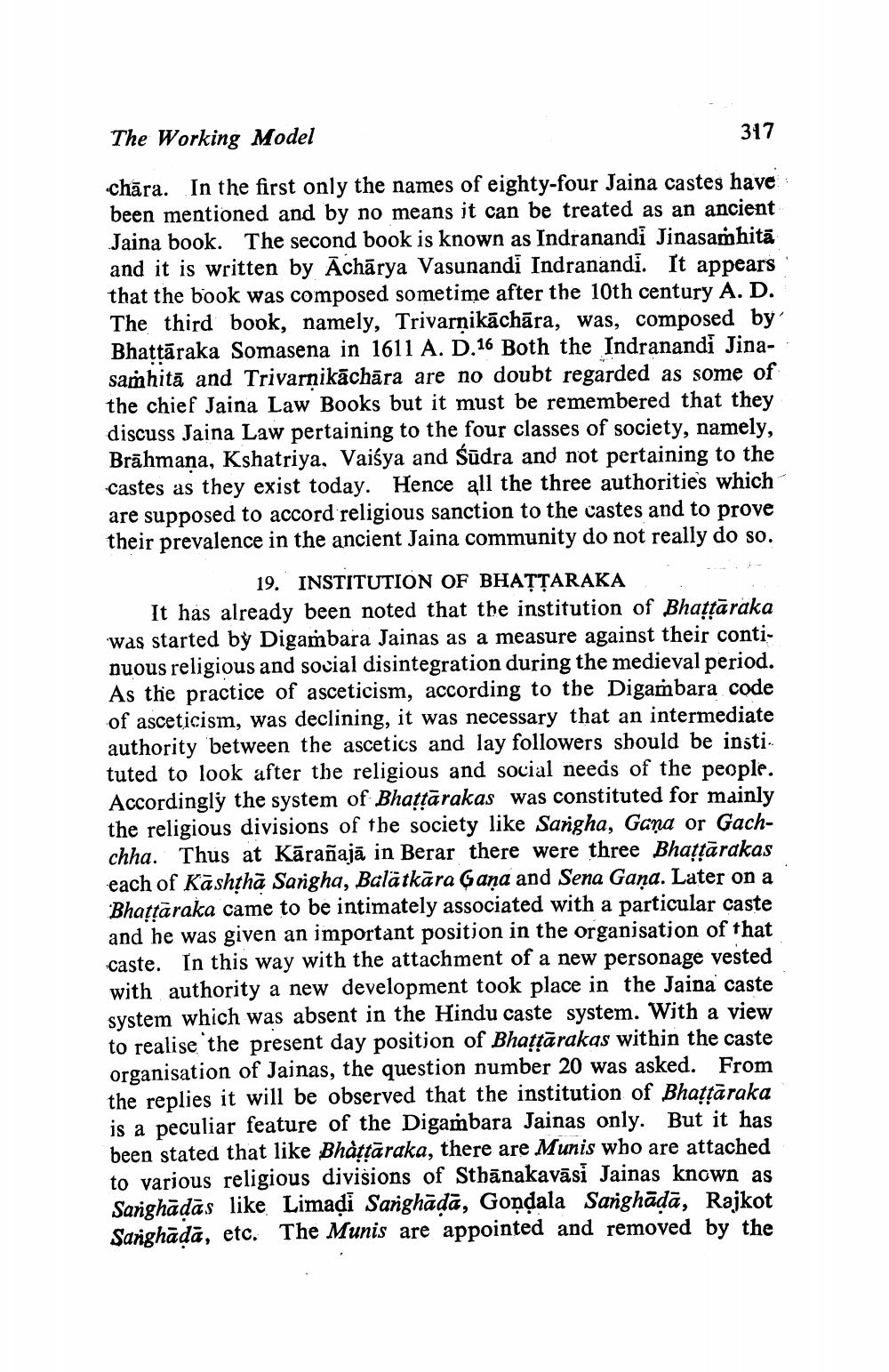________________
The Working Model
317
chāra. In the first only the names of eighty-four Jaina castes have been mentioned and by no means it can be treated as an ancient Jaina book. The second book is known as Indranandi Jinasamhitā and it is written by Achārya Vasunandi Indranandi. It appears that the book was composed sometime after the 10th century A. D. The third book, namely, Trivarņikāchāra, was, composed by Bhattāraka Somasena in 1611 A. D. 16 Both the Indranandi Jinasamhitā and Trivarnikāchāra are no doubt regarded as some of the chief Jaina Law Books but it must be remembered that they discuss Jaina Law pertaining to the four classes of society, namely, Brāhmaṇa, Kshatriya, Vaiśya and Sūdra and not pertaining to the castes as they exist today. Hence all the three authorities which are supposed to accord religious sanction to the castes and to prove their prevalence in the ancient Jaina community do not really do so.
19. INSTITUTION OF BHATTARAKA It has already been noted that the institution of Bhattāraka was started by Digambara Jainas as a measure against their continuous religious and social disintegration during the medieval period. As the practice of asceticism, according to the Digambara code of asceticism, was declining, it was necessary that an intermediate authority between the ascetics and lay followers should be insti. tuted to look after the religious and social needs of the people. Accordingly the system of Bhattārakas was constituted for mainly the religious divisions of the society like Sangha, Gaņa or Gachchha. Thus at Kārañajā in Berar there were three Bhattārakas each of Kashtha Sarigha, Balātkāra 6 aña and Sena Gaņa. Later on a Bhattāraka came to be intimately associated with a particular caste and he was given an important position in the organisation of that caste. In this way with the attachment of a new personage vested with authority a new development took place in the Jaina caste system which was absent in the Hindu caste system. With a view to realise the present day position of Bhattārakas within the caste organisation of Jainas, the question number 20 was asked. From the replies it will be observed that the institution of Bhattāraka is a peculiar feature of the Digambara Jainas only. But it has been stated that like Bhattāraka, there are Munis who are attached to various religious divisions of Sthānakavāsi Jainas known as Sarghādās like Limadi Sanghādā, Goņdala Sanghādā, Rajkot Sarghādā, etc. The Munis are appointed and removed by the




